Investigating solid organ transplants among Discovery Health Medical Scheme members from 2008 to 2022
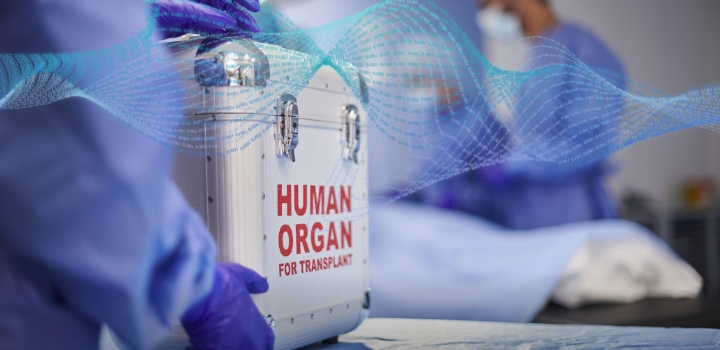
How many solid organ transplants has Discovery Health Medical Scheme funded over the 15 years from 2008 to 2022? What sort of transplants have taken place and where do most transplant recipients live? Also, how old are transplant recipients and how long do they typically live post-transplant? We explore these dynamics and more.
Authors
Discovery Health's Christiaan Smith (Actuarial Analyst), Chanie Suttner (Actuary) and Shirley Collie (Chief Research Actuary)
A reflection on national transplant data: DHMS funds one quarter of solid organ transplants carried out in SA from 2009 to 2021
Before we dive into the Discovery Health Medical Scheme (DHMS) organ transplant experience, let's look at how many transplants DHMS has funded over time as a proportion of transplants that have occurred nationally.
Organ Donor Foundation Statistics show that from 2019 to 2021, a total of 4296 solid organ transplants were performed in South Africa (excluding corneal transplants). And, 1119 (26%) of the transplants performed nationally were funded by DHMS (Figure 1).
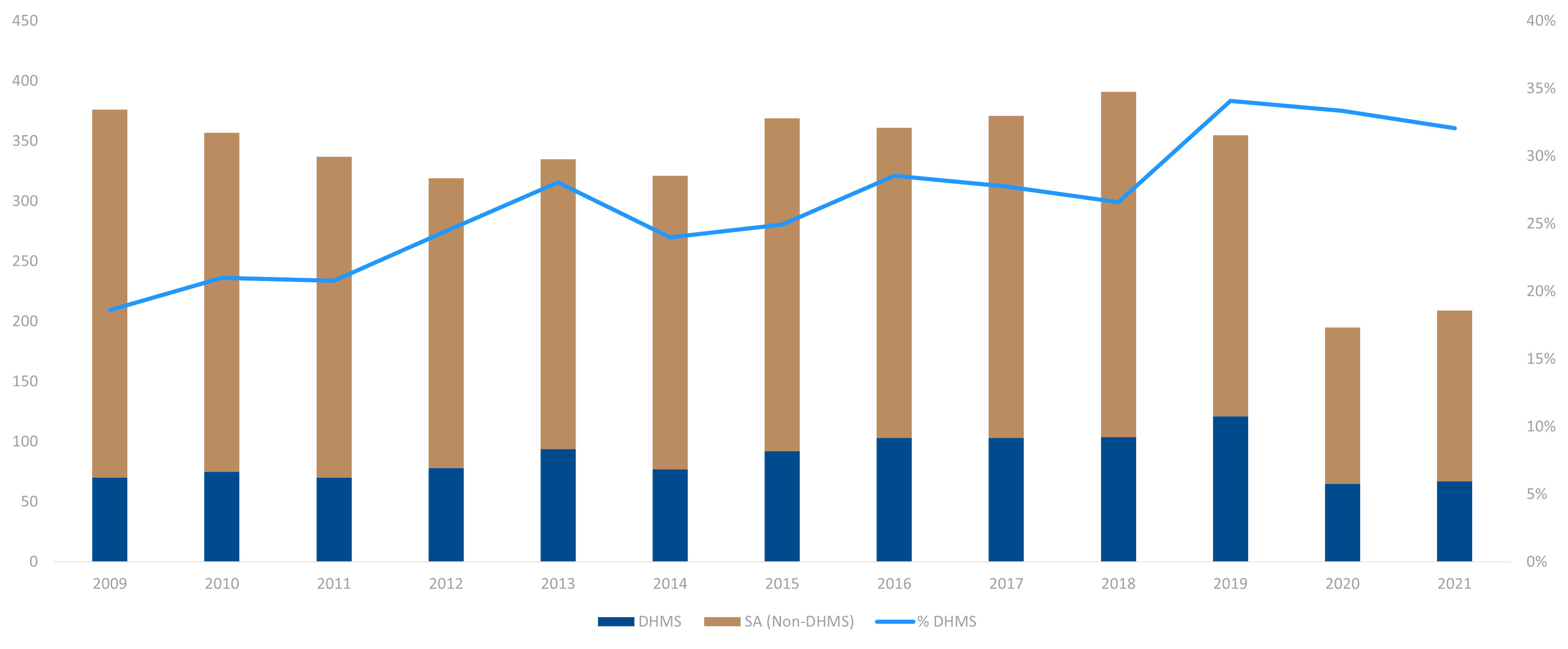
Figure 1: Proportion of transplants carried out nationally which were funded by DHMS: 2009 - 2021.
The proportion of transplants funded by DHMS steadily increased over the period - from 19% in 2009 to 32% in 2021.
Figure 2 shows the proportion of transplants funded by DHMS, by transplant type.
- DHMS funded mostly lung (74%) and heart (39%) transplants, followed by pancreas (35%), liver (33%) and kidney (24%) transplants.
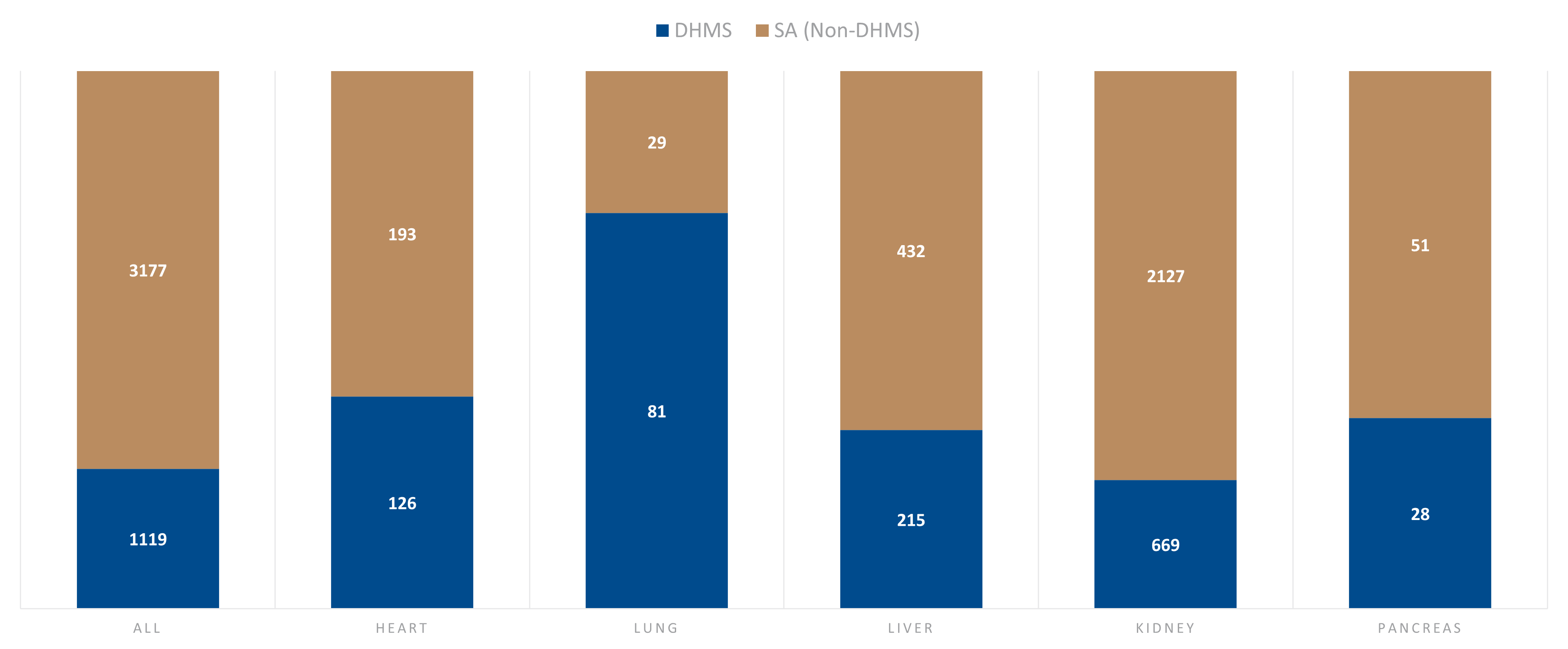
Figure 2: Proportion of national transplants that were funded by DHMS, by transplant type: 2009-2021
On average, 88 solid organ transplants are funded per year with a slightly increasing trend over time (Figure 1).
DHMS-specific transplant data analysis across 15 years: 2008-2022
Data around organ transplants carried out on DHMS members spans a slightly longer period than data for national transplants. DHMS transplant data is available for 2008-2022 (Figure 3).
- There was a drop in the number of transplants performed during the first two years of the COVID-19 pandemic - in 2020 and 2021. In 2022, the number of transplants performed returned to pre-pandemic (2019) levels.
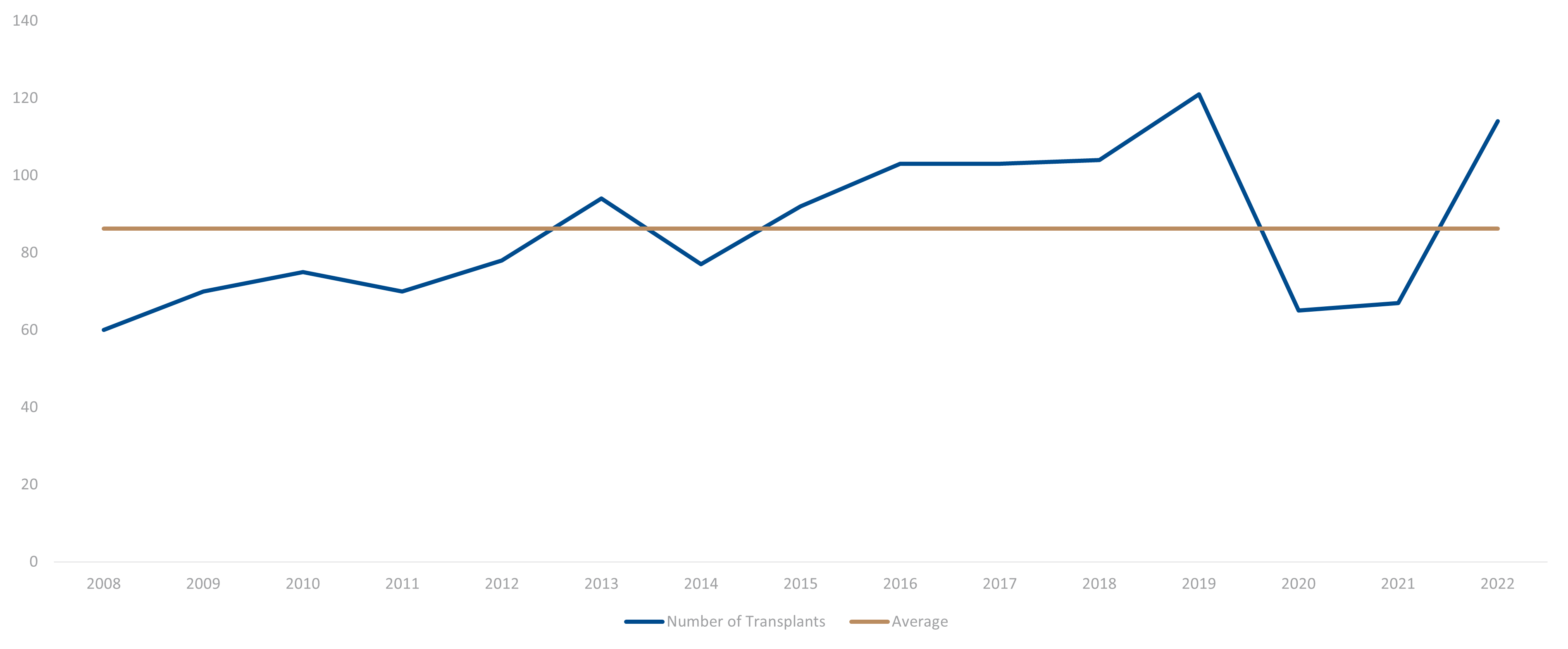
Figure 3: Number of transplants funded by DHMS per year: 2008-2022
What type of transplants have been funded by DHMS?
Between 2008 and 2022 DHMS funded (Figure 4):
- 61% (806) kidney transplants - the most common transplant type funded
- 19% (257) liver transplants
- 11% (143) heart transplants
- 7% (91) lung transplants
- 2% (30) pancreas transplants
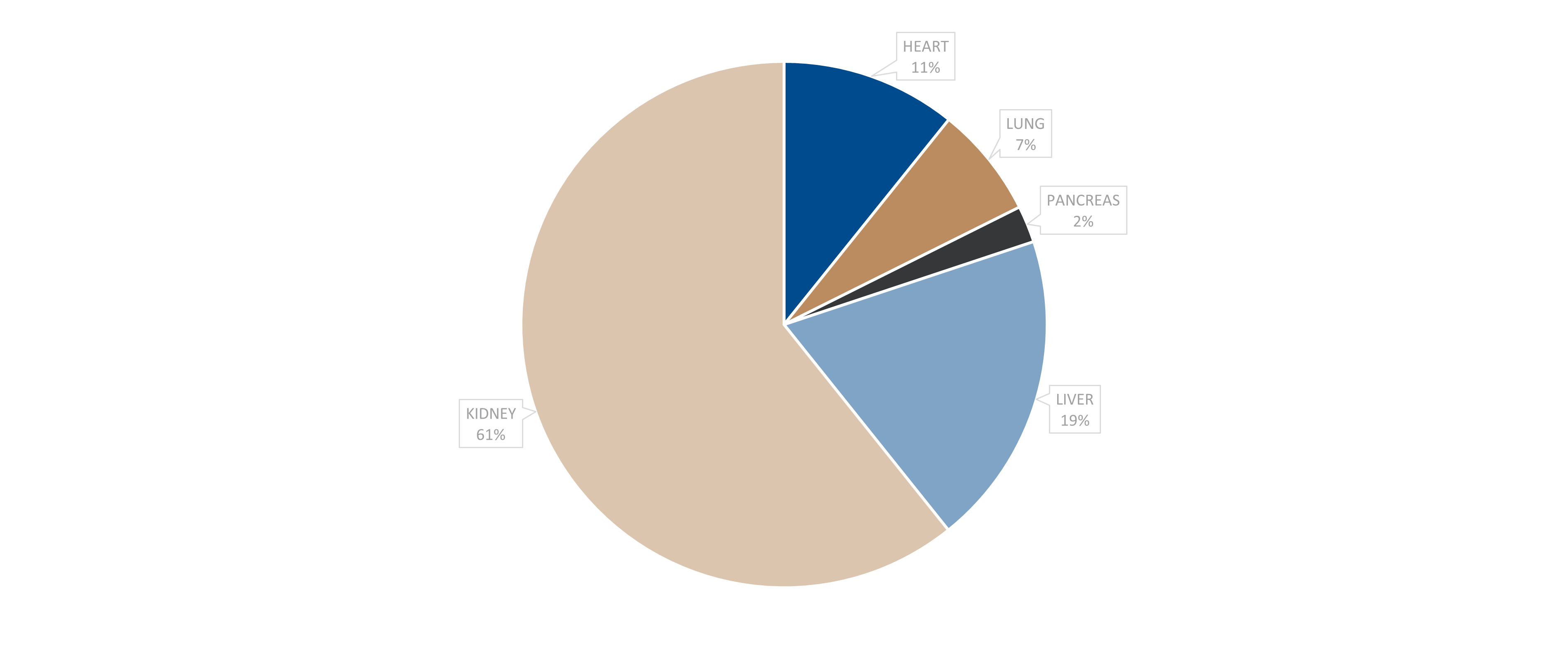
Figure 4: Proportion of transplant types funded by DHMS from 2008 to 2022
Solid organ transplants in DHMS members across age groups
The youngest DHMS member to receive a transplant (liver) was just 59 days old. This was also the youngest recipient of a liver transplant in Africa2. The oldest transplanted member was 75 years old and had a kidney transplant.
75% of:
- Kidney transplants occur at, or before members turn, 51 years old.
- Lung transplants and heart transplants occur at, or before members turn, 57 and 58 years of age respectively.
- Liver transplants and pancreas transplants occur at, or before members turn, 60 and 61 respectively.
Half of:
- Kidney transplants and also lung transplants occur at, or before members turn, 43 years old.
- Pancreas, heart and liver transplants occur at, or before members turn, 54, 51, 47 years old respectively.
A quarter of liver transplants occur at, or before members turn, 24 years old. A quarter of lung and kidney transplants occur when members are aged 32 or younger, while a quarter of heart and pancreas transplants occur when members are 40 and 43 years old or younger.
For heart, liver, kidney and pancreas transplants, the average age at which transplants occur is less than the median age (age at which half of transplants occur). So, most of these transplants occur at older rather than younger ages. The opposite is true for lung transplants (Table 1).
|
Age last birthday (in years) |
Heart |
Lung |
Liver |
Kidney |
Pancreas |
|
Oldest transplant recipient age |
67 |
72 |
74 |
75 |
74 |
|
75th percentile |
58 |
57 |
60 |
51 |
61 |
|
Median |
51 |
43 |
47 |
43 |
54 |
|
Average |
48 |
44 |
41 |
41 |
52 |
|
25th percentile |
40 |
32 |
24 |
32 |
43 |
|
Youngest transplant recipient age |
8 |
20 |
0 |
5 |
26 |
Table 1: Distribution of age of transplant recipients by transplant type
What proportion of transplant recipients are male and female?
From 2008 to 2022, 61% of transplant recipients have been male and 39% have been female (Figure 5). More males have had transplants over time, with the difference most obvious for heart transplants - 77% in males compared to 23% in females. Pancreas transplants are evenly split between males and females.
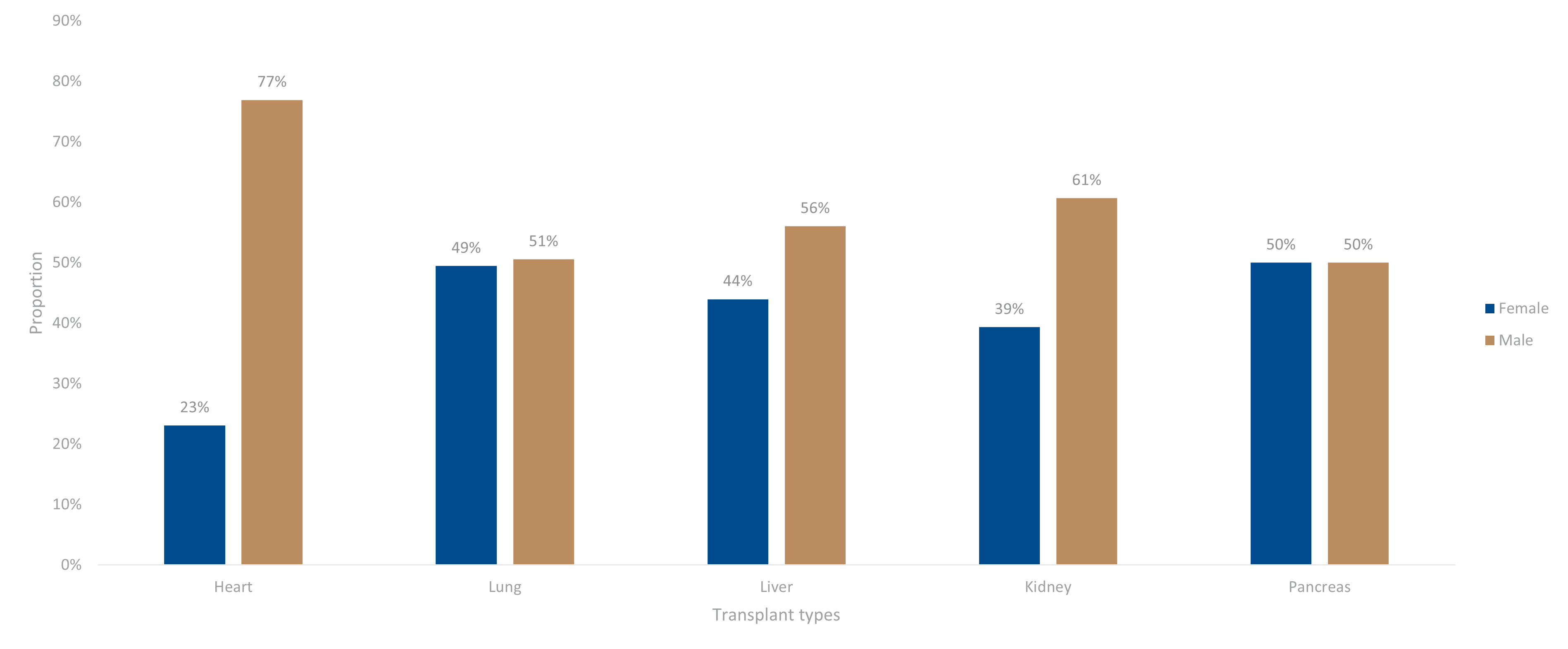
Figure 5: Transplant types in males and females - 2008 to 2022.
Chronic conditions in transplant recipients
On average, both male and female transplant recipients have four chronic conditions at the time of transplant, showing the complexity of their health.
In Figure 6, you can see the distribution of chronicity per transplant type, by sex, from 2008 to 2022:
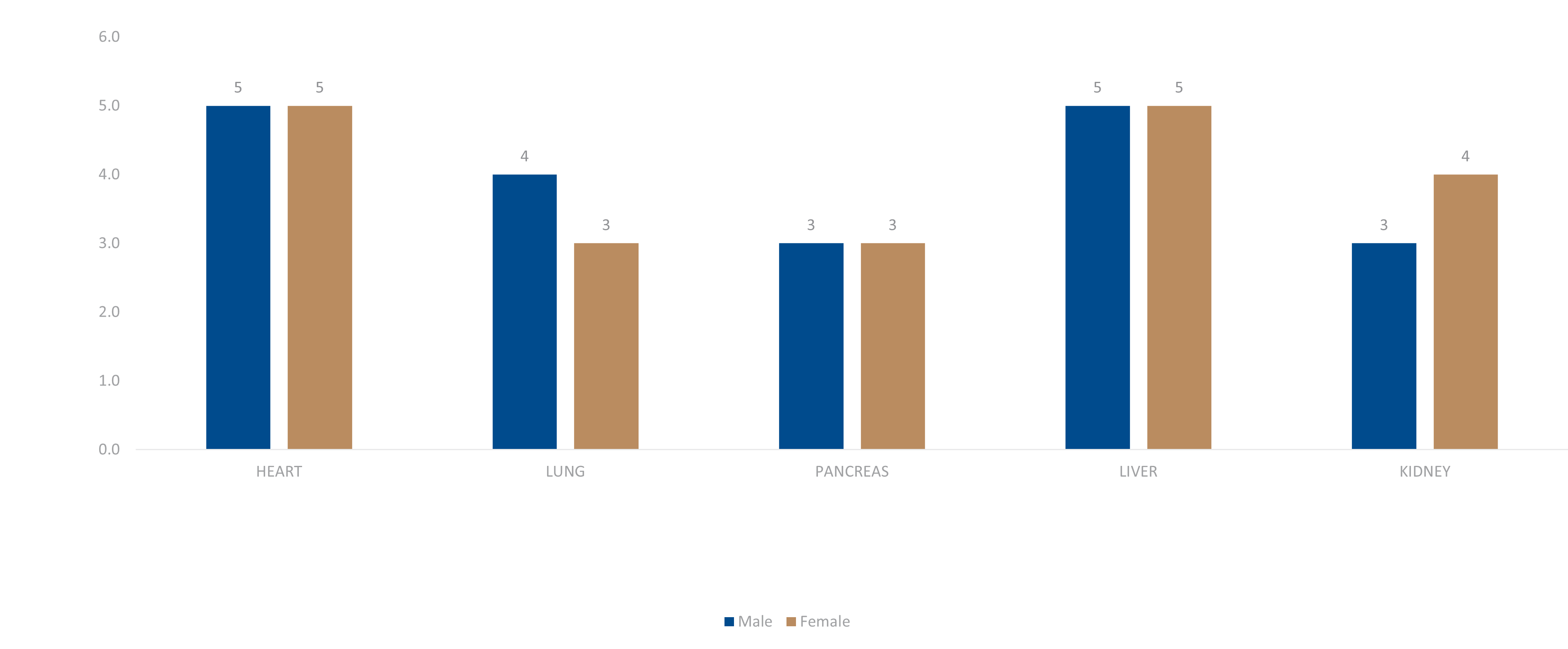
Figure 6: Average number of chronic conditions per transplant type by sex: 2008-2022
Have any DHMS members had more than one solid organ transplant?
Over the last 15 years, three Scheme members have received two solid organ transplants. Two members underwent both a kidney and then a pancreas transplant, and one member had single kidney transplant followed by another kidney transplant three months later.
Investigating transplant surgery durations and admission timelines
Table 1 shows the average theatre time and length of stay (LOS) related to receiving various solid organ transplant types.
Both liver and kidney transplants require an average theatre time of four hours and an average length of stay in hospital of 12 days. Lung transplants have the longest average theatre time at 12 hours, and an average length of stay of 33 days in hospital.
|
Transplant Type |
Average Theatre Time (Hours) |
Average LOS (days) |
|
Heart |
9 |
33 |
|
Lung |
12 |
33 |
|
Pancreas |
10 |
32 |
|
Liver |
4 |
12 |
|
Kidney |
4 |
12 |
Table 2: Theatre time and length of stay per transplant type.
Transplant numbers across South African provinces
Over the past 15 years (2008-2022), transplants have mainly been performed in Gauteng (1,034 transplants), followed by the Western Cape (623 transplants), Kwazulu-Natal (169 transplants) and then the Free State (14 transplants). No DHMS members' transplants have taken place in South Africa's remaining five provinces (Figure 7).
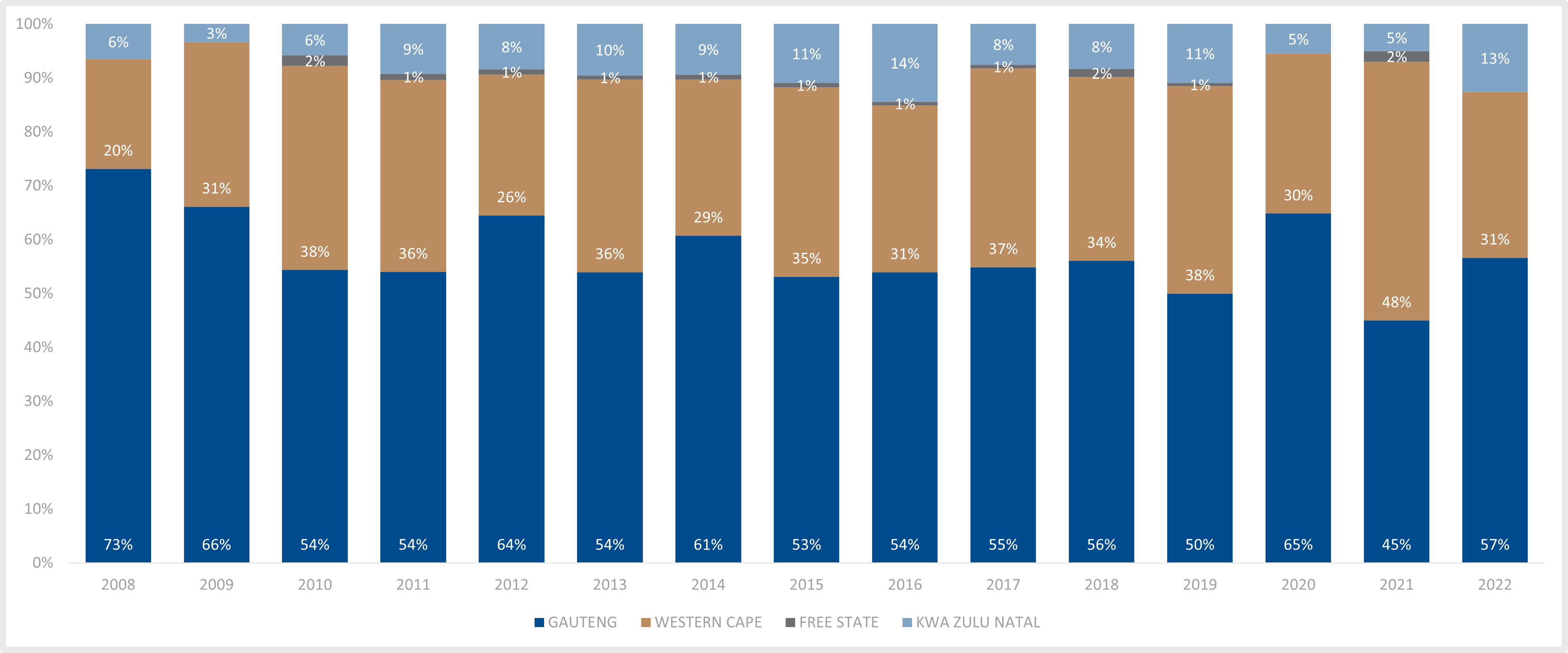
Figure 7: Proportion of transplants by province
The majority of DHMS members reside in Gauteng (46%), which is aligned to proportion of transplant recipients who reside there (45%).
The biggest difference between DHMS membership and the proportion of transplant recipients in a province is for the Western Cape, where 20% of overall DHMS members and 24% of transplant recipients reside, respectively.
Are members travelling to Gauteng and the Western Cape for transplantation?
It seems so. There may not be the capacity or infrastructure required to perform their transplants in their home province. While 57% of transplants occurred in Gauteng in 2022, only 45% of transplant recipients lived in Gauteng. And, though 31% of transplants were performed in the Western Cape in 2022, only 24% of transplant recipients lived there.
The converse is true for Kwazulu-Natal - 16% of transplant recipients lived there but 13% of transplants are performed there. This means that either Kwazulu-Natal may not have the necessary facilities to perform transplants required or that members elect to travel out of Kwazulu-Natal to have their transplants performed (Figure 8).
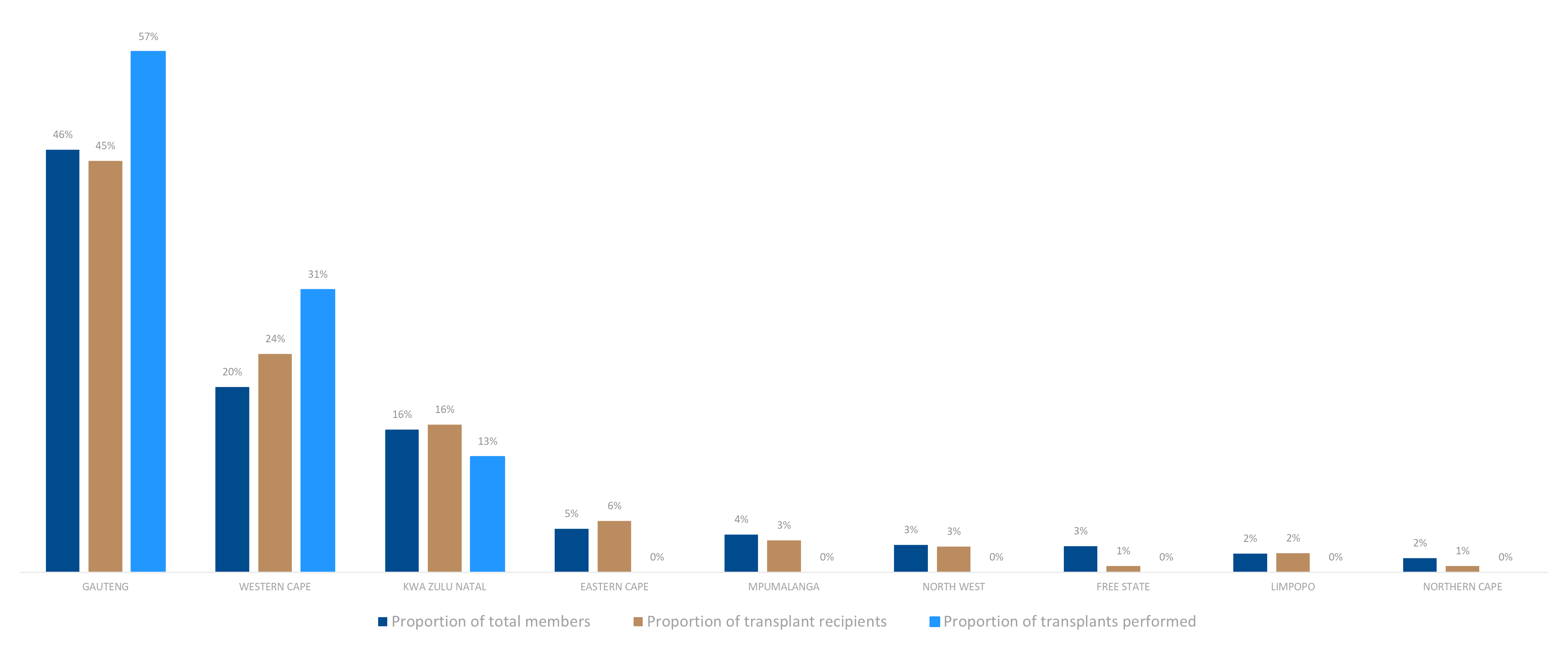
Figure 8: Proportion of all members, proportion of transplant recipients, and proportion of transplant performed per province in 2022.
How long do members who have had transplants typically survive?
Looking across transplant types, as many as 86% of all transplant recipients survive for at least one year, 80% survive at least three years and 76% survive for more than five years (Table 3).
This probability of survival is calculated by taking the number of members who survive for either one, three or five years after a transplant and dividing it by the number of individuals who had transplants more than one, three and five years ago, respectively. Members who have left the Scheme are excluded from the calculation as we cannot verify that they are still alive.
For example, when calculating the three-year survival proportion, we take the number of individuals who were confirmed to have survived for three years after a transplant, then divide it by the number of members who had a transplant more than three years ago. Members who left the Scheme within three years of having a transplant or had a transplant less than three years ago are not included in the calculation.
Table 3 shows the proportion of transplant recipients who survive one, or three or five or more years:
|
Transplant Type |
1 year |
3 years |
5+ years |
|
Heart |
67% |
59% |
57% |
|
Lung |
52% |
42% |
33% |
|
Liver |
82% |
80% |
76% |
|
Kidney |
95% |
90% |
85% |
|
Pancreas |
82% |
68% |
63% |
|
ALL |
86% |
80% |
76% |
Read some of our DHMS member transplant recipients' stories
- After heart transplant, Pedro (18) wins at World Transplant Games
- Verashka calls for more organ donors after life-saving kidney transplant
- Tevin celebrates adult life after a life-saving kidney transplant at age 12
- Mike gets a new heart
- Kidney donation transforms teenage Kaelyn's life
- Beating the kidney dialysis odds
Would you like to register to become an organ donor?
- Only 0.2% of South Africans are registered organ donors. South Africa therefore has an extreme shortage of donor organs.
- One organ donor can save seven other people's lives and one tissue donor can help up to 50 people.
- At any given time, up to 5,000 South African adults and children are waiting for a lifesaving solid organ (including heart, lung, liver, pancreas, kidney) or corneal transplant.
- To become an organ donor, simply register with the Organ Donor Foundation or call 0800 22 66 11 toll-free during office hours.
Interested in knowing more or reporting on these findings?
Please contact us on MEDIA_RELATIONS_TEAM@discovery.co.za to request any updated data available since publication and to obtain any further context required. You may also be interested reading a related piece: "15-year analysis shows chronic kidney disease has significant effects on the Discovery Health Medical Scheme and its members."
Did you find this post interesting?
Please visit our Discovery Health Insights Hub for a range of analyses and insights shared by our Discovery Health Intelligence Team over the past three and a half years and spanning a variety of health-related themes. Look out for our recent 15-year analysis of the DHMS chronic kidney disease experience, where we also touch on transplantation rates.
ALL INFORMATION SHARED ON THIS PAGE IS BASED ON PERSPECTIVES GAINED FROM ANALYSIS OF FIGURES AND TRENDS EMANATING FROM DISCOVERY HEALTH'S DATA POOL. THE ANALYSIS, WHICH IS CONDUCTED BY DISCOVERY HEALTH'S ACTUARIAL AND DATA SCIENTIST TEAM, AIMS TO ENCOURAGE INDUSTRY DIALOGUE. THIS CONTENT IS SHARED FOR EDUCATIONAL AND INFORMATIONAL PURPOSES ONLY. IT DOES NOT CONSTITUTE PEER-REVIEWED, PUBLISHED SCIENTIFIC RESEARCH, AND HENCE SHOULD NOT BE INTERPRETED AS SUCH OR USED AS A BASIS FOR ALTERING TREATMENT DECISIONS.